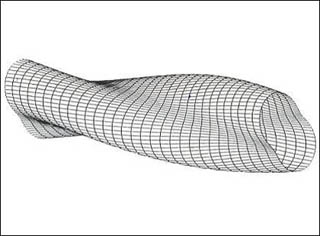Course Description
This course explores the following topics: derivation of elastic and plastic stress-strain relations for plate and shell elements; the bending and buckling of rectangular plates; nonlinear geometric effects; post-buckling and ultimate strength of cold formed sections and typical stiffened panels used in naval …
This course explores the following topics: derivation of elastic and plastic stress-strain relations for plate and shell elements; the bending and buckling of rectangular plates; nonlinear geometric effects; post-buckling and ultimate strength of cold formed sections and typical stiffened panels used in naval architecture; the general theory of elastic shells and axisymmetric shells; buckling, crushing and bending strength of cylindrical shells with application to offshore structures; and the application to crashworthiness of vehicles and explosive and impact loading of structures. The class is taught during the first half of term.
Learning Resource Types
assignment
Problem Sets
grading
Exams

Finite element simulation captures the correct buckling mode of a cylinder subjected to torsion. (Image by Prof. Wierzbicki.)










